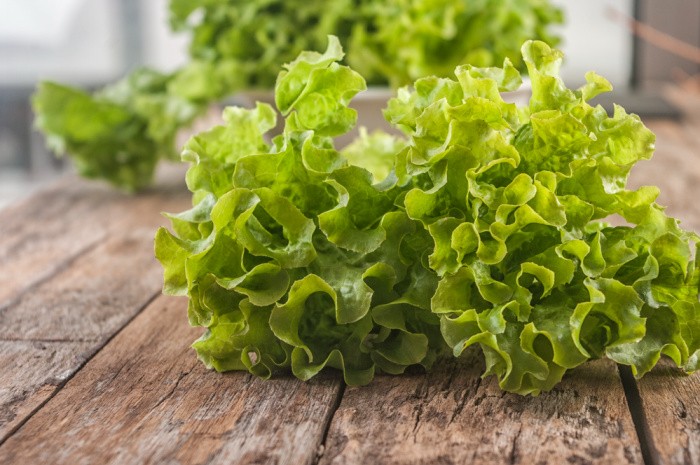
Do you think that because the air temperatures are cooling down, you can’t plant anything this time of year? While it may be true that most vegetables won’t have enough time to produce anything before the first frost hits due to the cooler temperatures, there are plenty of things you can plant during this month. If you’re unsure what to plant in October, keep reading to learn more about growing in this month.
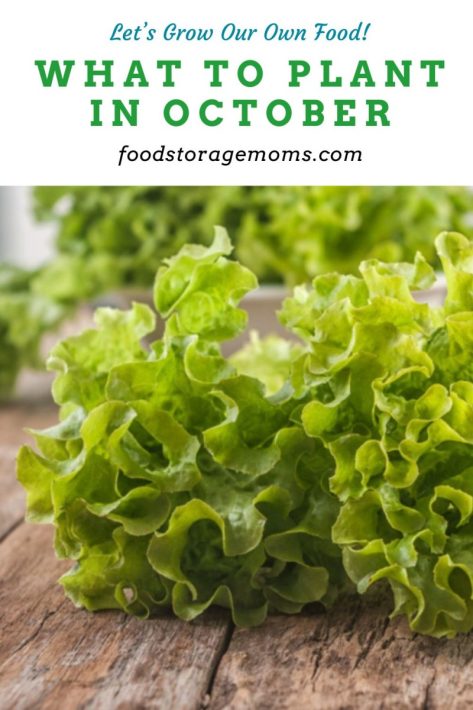
Nowadays, the Zones are off due to the weather. We used to be able to base our planting on the Zones in our region. It’s a bit trickier now due to the excessive rainfall and fluctuating temperatures. We may have trouble growing things we used to grow, so keep an eye on the temperatures in your area. Don’t forget to check the soil temperature as well. Please continue teaching your family how to garden; it will be a valuable skill sooner than later, trust me.
I update this series every month, each year. This year, it seems even more important to grow our own food. We can do it in pots, buckets, raised gardens, and, of course, in the ground if you have a yard that will support a garden. If nothing else, get your soil amended now. It will be ready for a late fall planting, giving you an early start, so you’ll be well-prepared for next year.
What is the Window for Planting in October?
The window for what to plant in October is approximately six weeks before your first frost. In my area, that date typically falls between September and October.
I highly recommend these for seedlings: CowPots and Organic Seedling Soil. This way, you plant your seeds and place the CowPots in your garden when the temperatures are correct.
How I Store My Garden Seeds
Plastic Photo Container and Label Maker
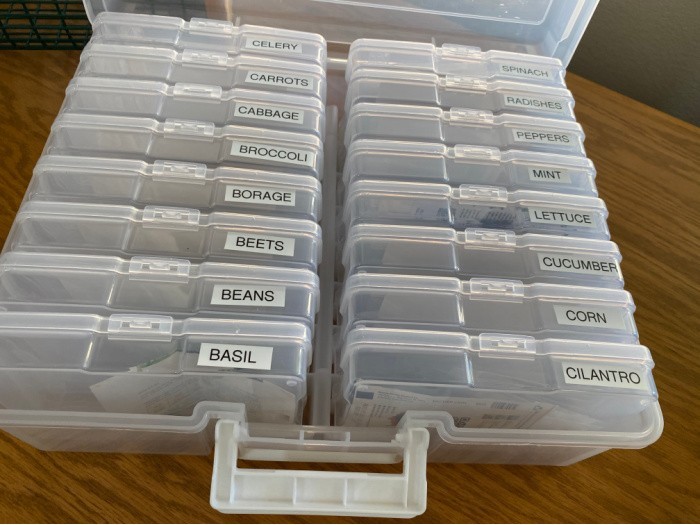
What To Plant In October
Find Out Your Garden Zone and Frost Times
If you’re unsure of your zone or when your first frost is expected to occur, you can check here to find your zone information. All you need to do is enter your zip code.
What to Plant in October by Zone
I live in Zone 8a, so most of what I have written would apply to that Zone. So, I wanted to ensure my readers know what you can plant in your Zone. Below is a list of things you can grow in each zone in October!
Zones 1 and parts of 3
In Zones 1-3, October is the time to harvest. In fact, in some places, we’ve had blizzards in October in these zones. October is not the best time to begin planting outdoors. However, you can grow things such as herbs, peppers, and tomatoes indoors.
Zone 3
In Zone 3, be cautious of frost. October can be your best friend or your worst enemy. Instead of planting things in October, you’ll want to harvest your crops. Crops you should be harvesting include:
- Apples
- Root Veggies
Zone 4
The weather is starting to deteriorate in Zone 4. This means it’s almost time to start wrapping up your outdoor garden. It is time to harvest your root veggies and apples. However, you can also plant:
Zone 5
October is the perfect time for Zone 5 growers to begin compost and mulching efforts. Again, there isn’t much you can plant in this zone in October, but you should harvest fruits. You can plant:
Zone 6
In Zone 6, it’s still a little late in the season to begin planting much. This is the perfect time to start tidying up your garden and adding to your compost pile. You can still plant:
- Spinach
- Lettuce
- Kale
- Broccoli
- Carrots
Zone 7
Typically, you’ll want to plant more in September than in October if you live in Zone 7. However, you can still plant the following if you plant in early October:
- Radishes
- Garlic
- Onions
- Spinach
- Carrots
- Turnips
- Broccoli
- Kale
- Lettuce
Zone 8
If you live in Zone 8, you are in luck because there are still various things you can plant in your garden this month. These include:
- Lettuce
- Cabbage
- Spinach
- Carrots
- Beets
- Peas
- Strawberries
- Garlic
- Onion
- Radishes
- Turnips
- Broccoli
- Bok Choi
- Bright Lights Swiss Chard
Zone 9
In this Zone, the weather is much the same as in Zone 8. This means you also have a few options for planting in this zone. Here are items that you can start planting this month:
- Radishes
- Spinach
- Greens
Zone 10
If you live in Zone 10, it’s time to plant and transplant. Here are some things you can start doing in October
Transplant………..
- Tomatoes
- Eggplants
- Peppers
Plant…………………
- Beans
- Root Veggies
- Lettuce
- Spinach
Why Plant in October?
In many states, you may still be feeling warmer weather in October. Fall is about to sneak up on you, but that doesn’t mean you don’t have time to plant more in your garden before winter hits. Here is why it’s essential to plant in October:
- Autumn’s cooler weather is easier on plants and on you.
- The soil is still warm, allowing the plants to take root, and healthy root growth ensures robust plant development.
- Fall has more good days for planting than spring does.
- You don’t have to wait for the soil to warm up.
- It’s typically a great time to shop at the stores. This means you can get plants and seeds for a fraction of the cost.
- Autumn showers are plentiful, so you won’t have to water your plants as often or as long.
- Pests and disease problems are minimal in October.
What to Plant in October
If you haven’t planted year-round, you are in for a real treat! There are various plants you can grow even in October! Hopefully, you can find the seedlings for the plants you want at the garden centers near your home. Better yet, get some seeds and grow your seedlings.
Brussels Sprouts
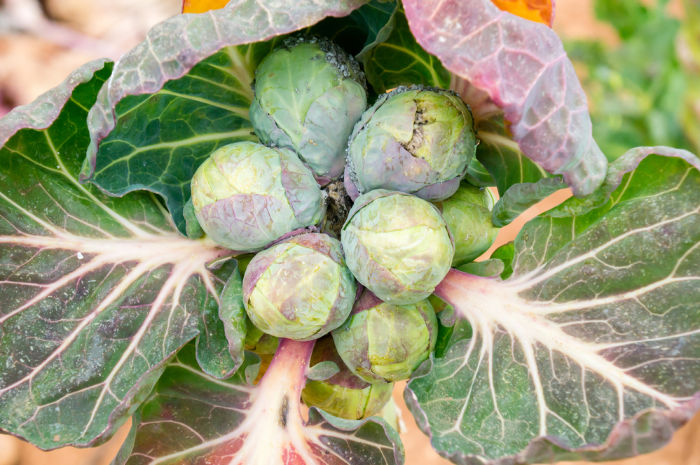
Fortunately for you, Brussels sprouts grow best in cool weather. This means that October is an ideal time to plant them. They can sprout from the seed when soil temperatures are between 45°F and 85°F.
It would be best to plan to plant them 6-8 weeks before your first frost. Gardeners in zones 9-10 can plant Brussels sprouts between October and December.
How to Grow Brussels Sprouts
Brussels sprouts are pretty easy plants to grow, especially in the fall. Here are some tips you need to know when planting Brussels sprouts:
- Plant your sprouts 6-8 weeks before the first frost.
- Select an area of your garden that gets full sun.
- Make sure the soil is rich.
- Sow seeds 3-4 inches apart. Or, if you have seedlings, plant them 18-24 inches apart.
- Keep the plants watered so the soil remains consistently moist.
- Fertilize your plants a month after planting with All-Purpose Food Granules.
- You will want to keep an eye out for worms.
- Brussels Sprouts can be a great choice if you want to have low-maintenance plants in your garden.
How to Harvest Brussels Sprouts
Your Brussels sprouts will ripen around 80-90 days after being planted. Snip off the sprouts when they are about 1-2 inches in diameter. The leaves will turn yellow as the plants mature. Store your unused Brussels sprouts in the refrigerator.
Bulbs
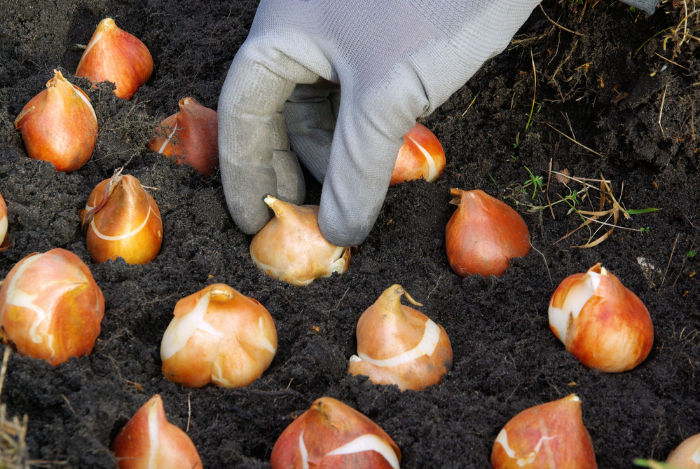
Did you know that most plants with bulbs can be planted in October? Bulbs actually need to be planted during the early fall so they have enough time to root and develop before spring. Let’s get busy and plant bulbs now so we can enjoy a plentiful harvest next year. Some people refer to these plants as spring bulb plants because they are planted in the fall to produce blooms in the spring.
The cold, dormant period from October to March provides these plants with the “chill hours” they need to thrive the following year. However, plant your bulbs at least six weeks before the first frost.
How to Grow Bulbs
Planting your bulbs is super easy, but remember that you won’t reap the benefits until the following spring. Here are some tips for planting and growing bulbs this fall:
- Choose a spot with full sunlight. This means at least 6 hours per day.
- Dig a hole 2-3 times deeper than the bulb is long. For a 3-inch bulb, the hole should be 6-9 inches deep.
- Place your bulb on the ground, pointy side up (if there is a pointy side).
- Plant in rich, well-draining soil.
- Spread a layer of mulch to prevent small animals from digging up your bulbs.
- Plant in groups instead of in straight rows.
- Keep them watered well.
Carrots
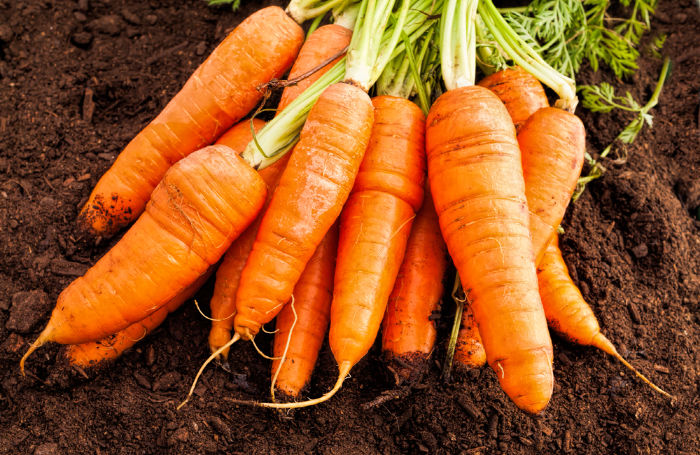
The great thing about growing carrots is that they are fun and easy to grow during the fall months. Carrots grow best during fall and winter in zone 8. It takes 70-80 days to reach harvest.
How to Grow Carrots
Planting carrots is super easy. Here is how you can grow carrots during October with minimal effort:
- Dig your carrot plot to a depth of 12 inches.
- Make sure the soil is smooth.
- Add a 1-inch layer of compost to the soil.
- Plant your carrot seeds in the soil. Then, cover with a quarter-inch of soil.
- Plant seeds in rows that are 3 inches apart.
- Handle the water carefully, as you don’t want to wash away the seeds.
- Keep your plot moist at all times.
How to Harvest Carrots
To determine if carrots are ready to harvest, dig around the base of the stems with your finger. This will tell you the size of the carrot.
Carrots should be ready for harvest about 8 weeks after planting. To avoid rotting, you’ll want to pick these fall carrots before the ground freezes.
Planting Kale in October
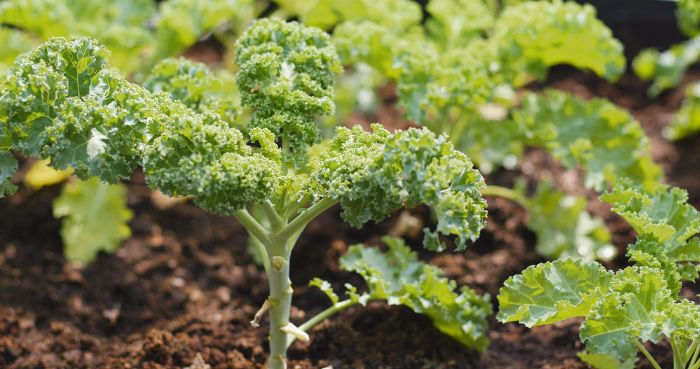
Kale is best planted in the Autumn months so you can have delicious salads come harvest time. It is a hardy, cool-season plant that can even tolerate fall frosts.
How to Grow Kale
Growing kale is relatively easy. Here are some of my tips on how to grow kale in October:
- Mix 1-½ cups of 5-10-10 fertilizer into the top 3 to 4 inches of soil.
- Plant your seeds 1/4 to 1/2 inch deep.
- Spread the seedlings 8-12 inches apart after approximately two weeks.
- Water plants regularly, but don’t overwater them.
- Place a heavy amount of mulch around the plants after the first frost.
How to Harvest Kale
Your kale plants can continue to produce leaves during the winter months. When Kale is ready to harvest, the leaves will be the size of your hand. To harvest, only pick about a fistful of leaves per harvest.
You want to avoid picking the terminal bud (located at the top center of the plant) to keep the plant producing more leaves. Kale can continue to grow until it’s 20 degrees outside.
Lettuce
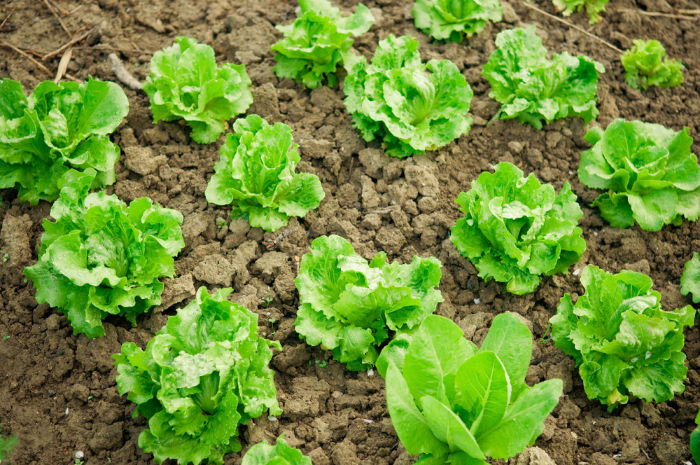
Like Kale, Lettuce is a hardy plant that can grow well in the spring or the fall. The great thing about growing lettuce is that it is a super source of vitamin A.
How to Grow Lettuce
If you plan to grow lettuce in the fall, plant it eight weeks before the first expected frost. Lettuce can tolerate a light frost, so that’s good. Here are some tips on growing lettuce in the fall:
- Plant your seeds when the soil is above 40 degrees. They germinate best in temperatures between 55°F and 65°F.
- Select a sunny spot to give your lettuce lots of sunlight each day.
- Plant seeds in well-draining soil that has been tilled and prepared. Feed the soil with composted organic matter.
- Plant seeds 1/4 to 1/2 inch deep.
- Cover seeds with 1/4 to 1/2 inch of soil.
- Water the lettuce when you notice the leaves are wilting.
- Mulch around the plants to preserve moisture.
How to Harvest Lettuce
For the best taste, harvest your lettuce when it has reached full size but just before it reaches maturity. It’s best to harvest it in the morning before the sun has hit the leaves.
For Butterhead or Romaine lettuce, harvest by removing the outer leaves, digging up the whole plant, or cutting the plant an inch above the soil surface.
You’ll want to harvest the outer leaves when the center is firm for Crisphead lettuce.
Radishes
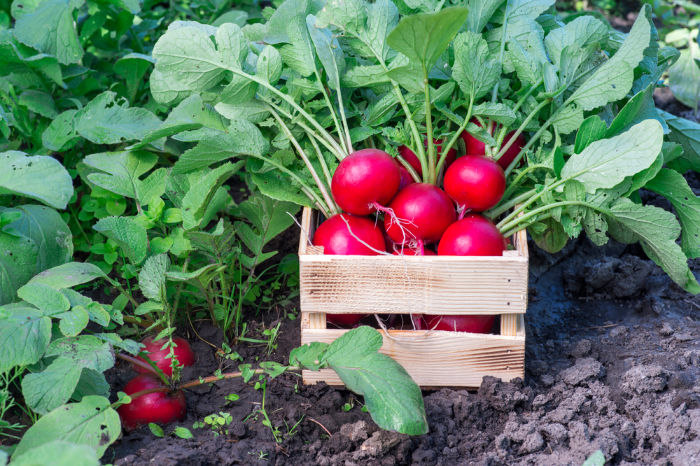
Radishes can be planted in the spring and the fall. They are hardy and easy-to-grow root vegetables that can be planted multiple times throughout the year.
How to Grow Radishes
Since radishes are one of the easiest vegetables to grow, you won’t have problems planting them in October. Here are some tips on increasing your radishes:
- Plant your radishes in a sunny spot.
- Radishes grow like carrots and should be planted in rich organic matter.
- Plant seeds 4-6 weeks before the first frost.
- Sow your seeds 1/2 to 1 inch deep. Plant them 1 inch apart.
- Thin your radishes to about 2 inches apart when they are at least a week old.
- Keep your soil evenly moist. However, don’t waterlog the plant.
- Put a thin layer of mulch around the plants to keep them moist.
How to Harvest Radishes
Radishes proliferate. You can begin harvesting them three weeks after planting. You’ll want to harvest them when the roots are about 1 inch in diameter at the soil surface. Pull one out to test for size and maturity before harvesting all of them.
Blueberries
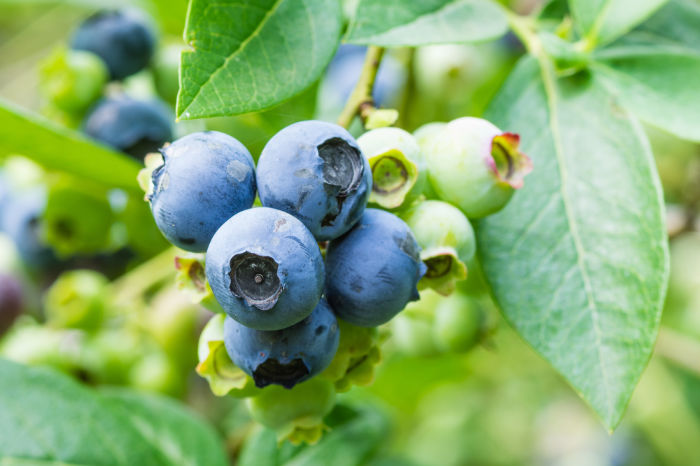
Did you know blueberries are an ideal fall plant? Planting blueberries in the fall allows them plenty of time to develop their roots and ensures them the right amount of chilling to set the fruit for next year.
However, you will want to ensure that you purchase the correct type of blueberry bushes for your specific climate zone.
Northern highbush varieties tend to perform better in northern states, whereas rabbiteye and southern highbush varieties are more suited to the southern regions.
How to Grow Blueberries
Blueberries are one of those fruits that need to be planted in late September or early October. Here are some tips for growing blueberries:
- Select a sunny location for your blueberry bushes with well-drained soil.
- You want to plant your bushes approximately 2 1/2 feet in diameter and 1 foot deep for each plant.
- Remove 1/3 to 1/2 of the soil, add an equal amount of pre-moistened peat moss, and mix well to help the plants grow better.
- Place 2-4 inches of mulch around plants to help retain moisture in the soil and keep weeds at bay.
How to Harvest Blueberries
You’ll know it’s time to harvest your blueberries because they’ll turn blue! Don’t harvest blueberries until they have turned blue.
When blueberries are ready to harvest, they will fall from the branches into your hands without any tugging or pulling.
Flowers
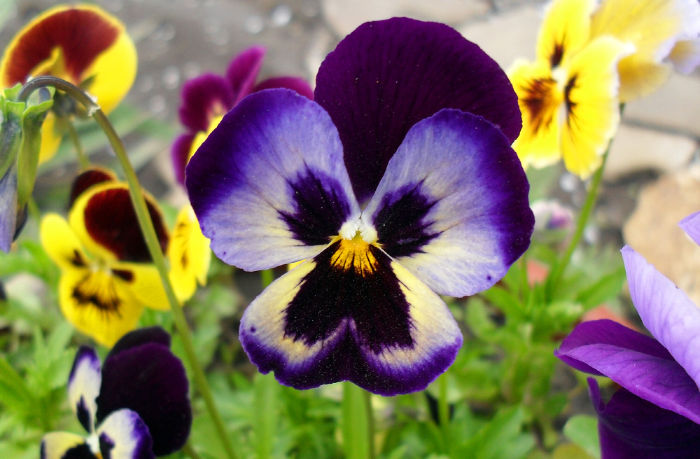
In addition to food sources, several flowers can be planted in your October garden. Flowers that can be planted during the cooler Autumn weather include peonies and pansies.
You can also replant and divide Hostas during this time. Flowers can be planted in zones 5-10 this time of year.
If you need some sturdy garden gloves, I love these DIGZ Garden Gloves. They come in different sizes!!
Please Check Out What To Plant Each Month:
- What To Plant In January
- What To Plant In February
- What To Plant In March
- What To Plant In April
- What To Plant In May
- What To Plant In June
- What To Plant In July
- What To Plant In August
- What To Plant In September
- What To Plant In October
Final Word
Taking advantage of your garden throughout the year is the best way to achieve self-sufficiency. Not only is it a good idea to be self-reliant if emergencies come your way, but using your garden to help provide food saves you more at the store! What do you plan to plant this October? Let me know in the comments below! May God bless this world, Linda
Copyright Images: Lettuce Depositphotos_150493086_S
The post What To Plant In October appeared first on Food Storage Moms.
from Food Storage Moms
No comments:
Post a Comment